This article explains installing Joomla with Apache and Cloudflare support on Ubuntu Linux.
Joomla — a free, mobile-ready, open-source content management system (CMS), is a great way to build beautiful websites. However, to add an extra layer of security and improve your user experience, you may want to add Cloudflare, CDN / SSL, and security features.
Installing Joomla with Apache and Cloudflare support on Ubuntu Linux can provide an extra layer of security and improve the user experience of your website. Joomla is a free, mobile-ready, open-source content management system (CMS) that allows you to build beautiful websites.
Meanwhile, Apache is an open-source web server that can handle a high volume of traffic and provide a stable hosting environment for Joomla. Lastly, Cloudflare is a content delivery network (CDN) that can improve the performance and security of your website by caching and distributing your content across a global network of servers.
These technologies can help you create a fast, secure, and reliable website that can handle high traffic volume.
When you’re ready to set up your server and Cloudflare to use Origin Certificate, follow the steps below:
How to sign up for Cloudflare
The first step in this tutorial is to sign up for a Cloudflare account. This post assumes that you already have registered a domain name. If you don’t, then go and get one before continuing further.
If you already have a Cloudflare account, then skip the registration below.
https://dash.cloudflare.com/sign-up
Type in your email address and click Create Account.
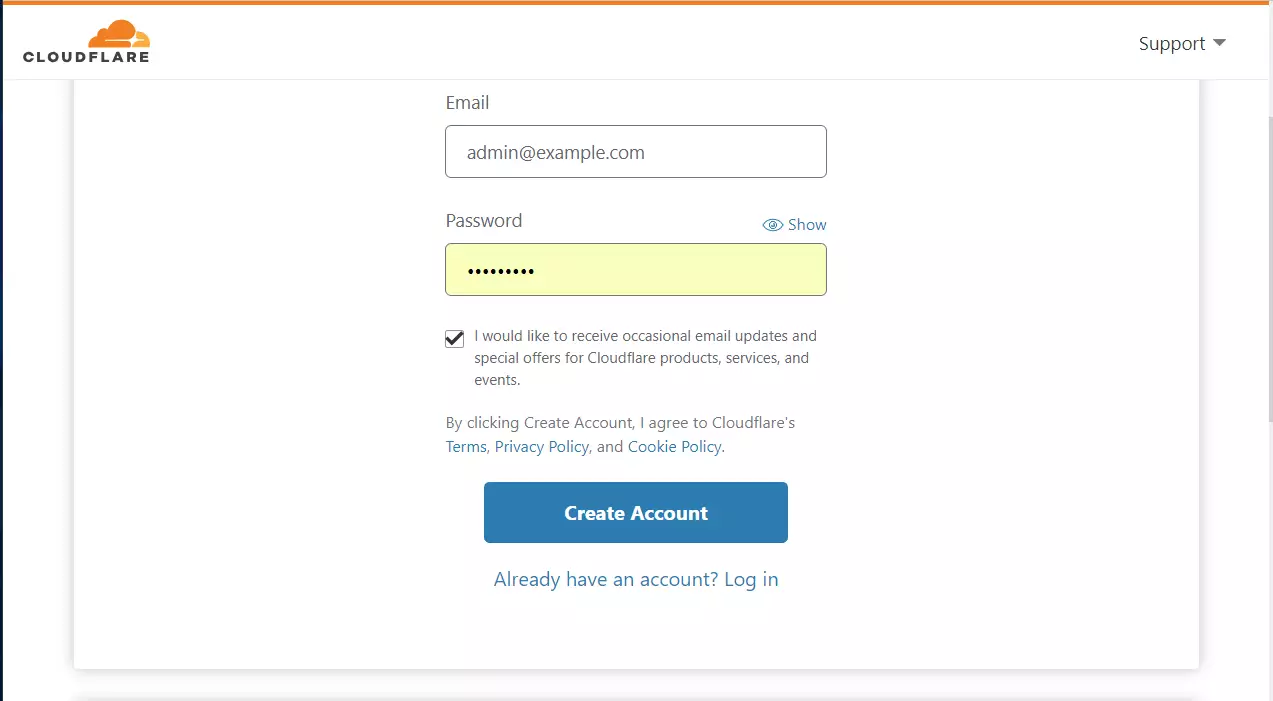
Once the account is created and you’ve verified your email address and logged back into the Cloudflare account, click the button or link (Add a Site) to add a site to your account.

Next, type in the domain name you have registered. Again, Cloudflare service will help speed up and protect the site you add.
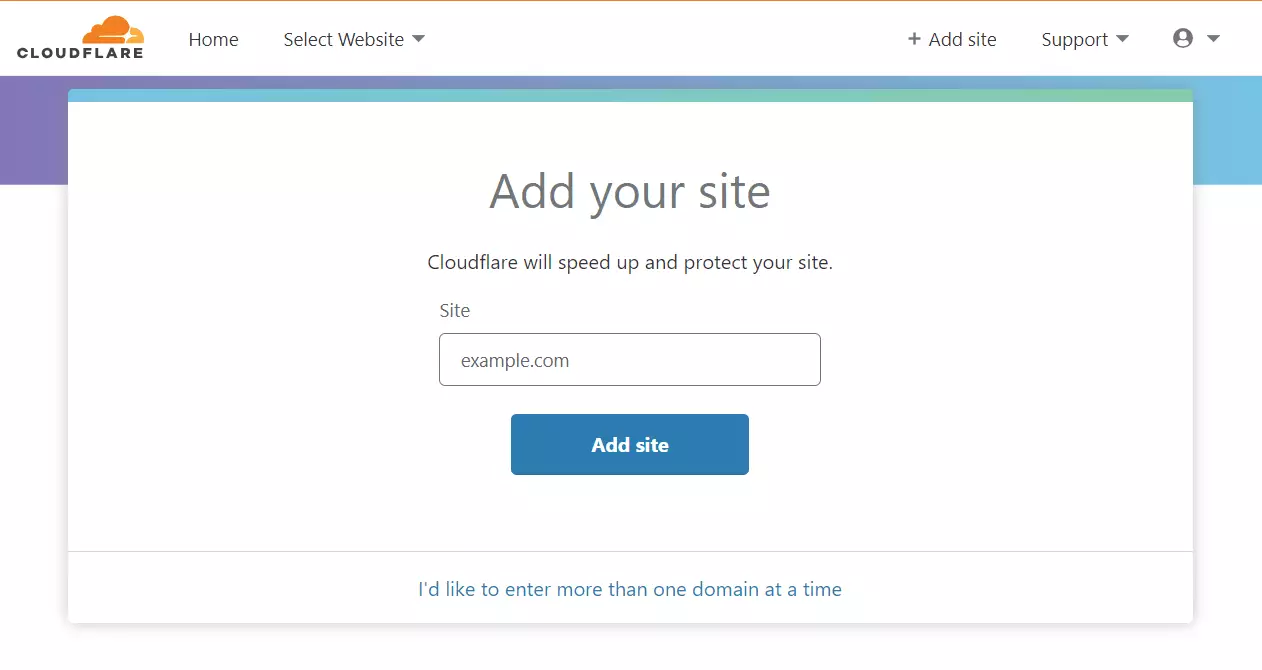
Next, Cloudflare will query your domain DNS provider for the records in the DNS table. Cloudflare should find the domain and import the records into its DNS systems if it is online.
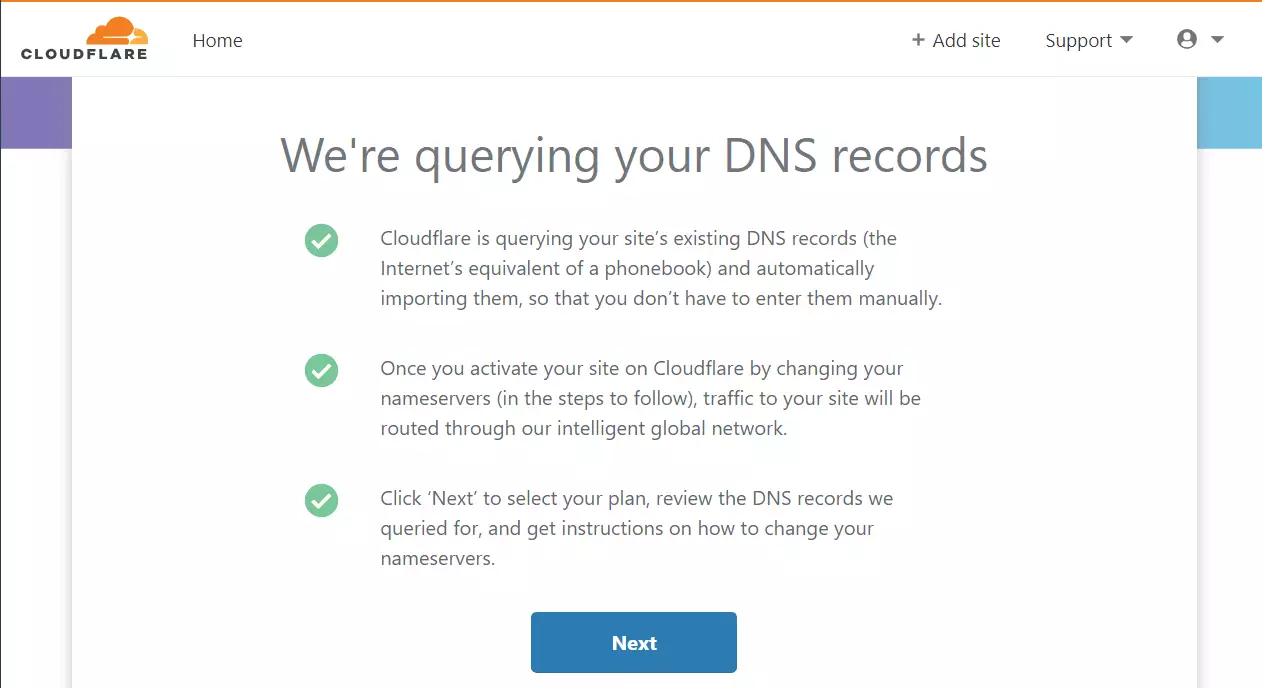
After that, select the plan you want to use for the site. For this tutorial, we will be using the Cloudflare free plan.

You should see two nameservers provided to you by Cloudflare when you’re done. You need to log on to your domain provider’s portal. Then, where you have your domain, replace the nameservers with the ones Cloudflare gives you.

For example, our example.com site is hosted with Google Domains. Log on to your Google Domains account and select use custom nameservers.
You’ll have the option to enter the nameservers provided by Cloudflare. Save your changes when you’re done.
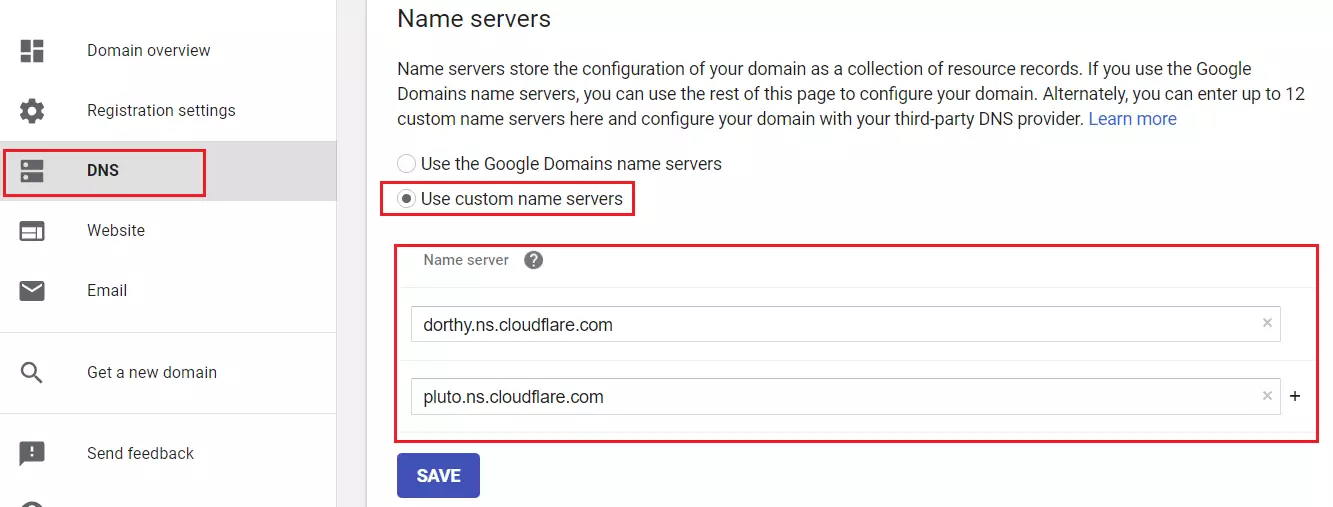
Once you’ve saved your custom nameserver changes, return to your Cloudflare account and wait for Cloudflare to see the changes. Depending on your domain provider, it takes up to an hour for the DNS changes to be visible on Cloudflare.
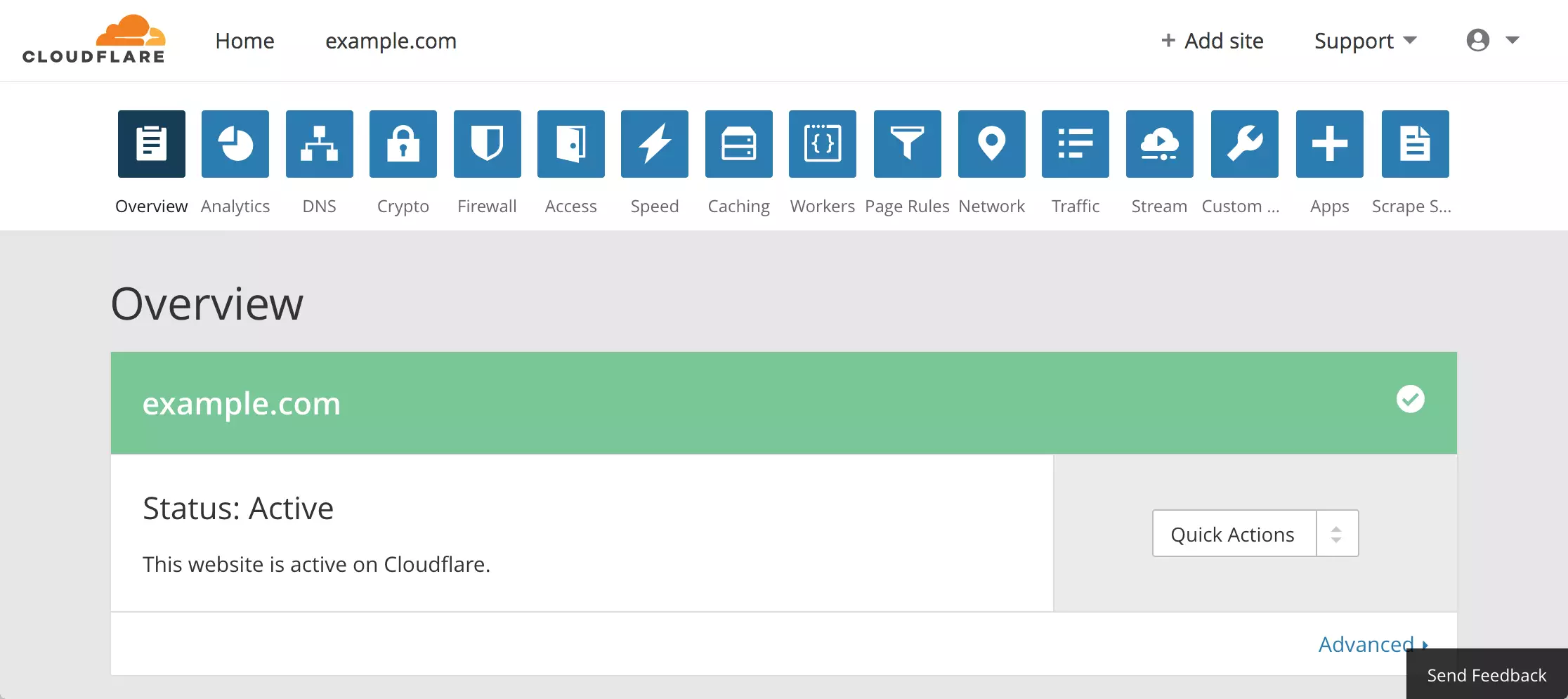
Once all is ready, you’ll see your site status as Active.
You should also see your Cloudflare account with DNS entries when everything is done, as shown below. Your DNS records might have more entries than the two below. However, these two entries are the most important for running your website.
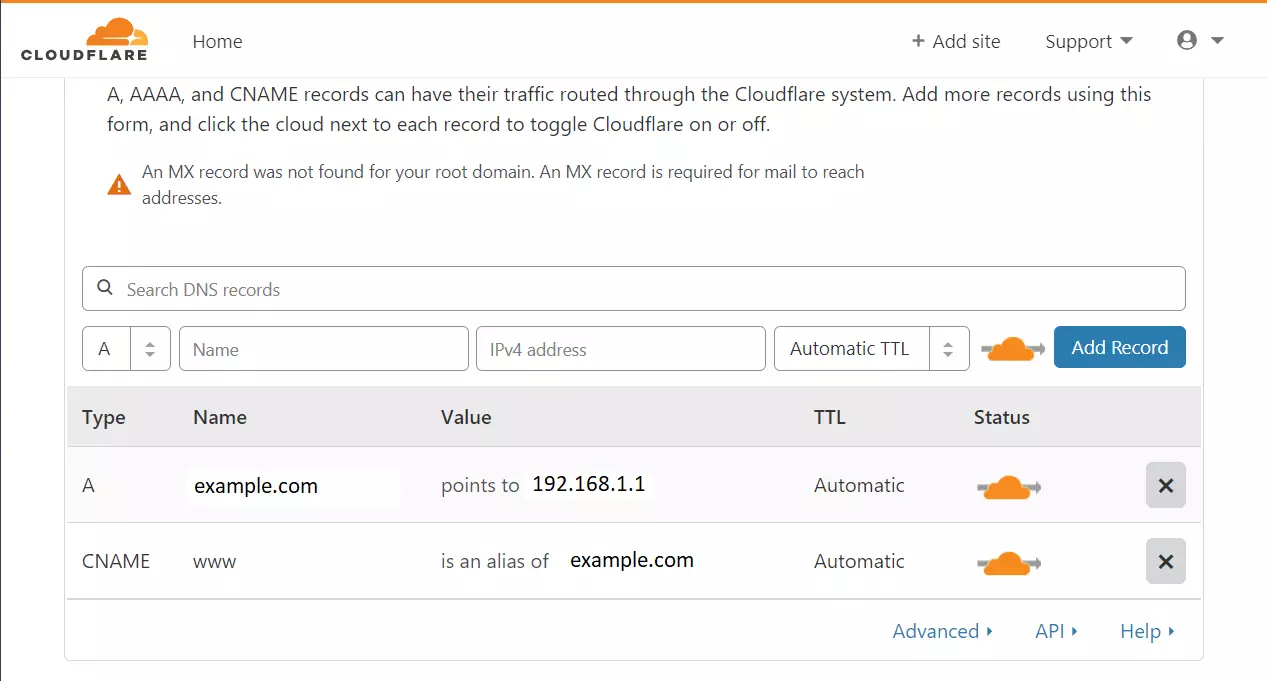
After that, click on the Crypto tab and choose to enable Full (strict) SSL. This should turn on SSL for the site.
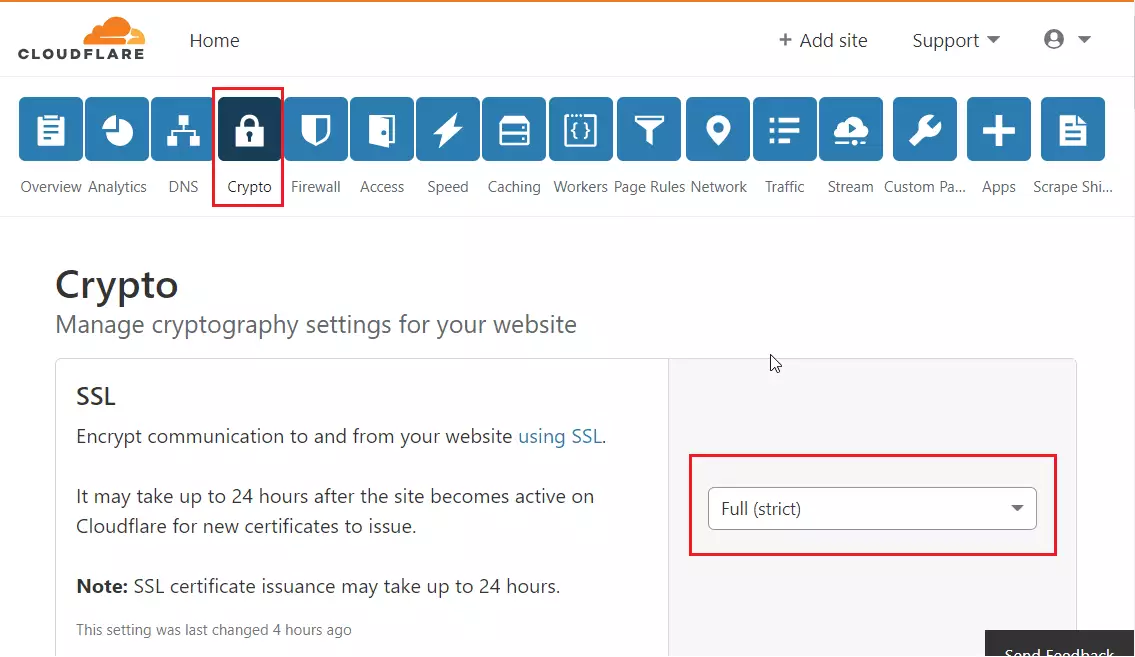
While still on the Crypto tab, scroll down to Origin Certificates. Then click the button to create the Certificate.
Use the free TLS certificate signed by Cloudflare to install it on your origin server. Origin Certificates are only valid for encryption between Cloudflare and your origin server.
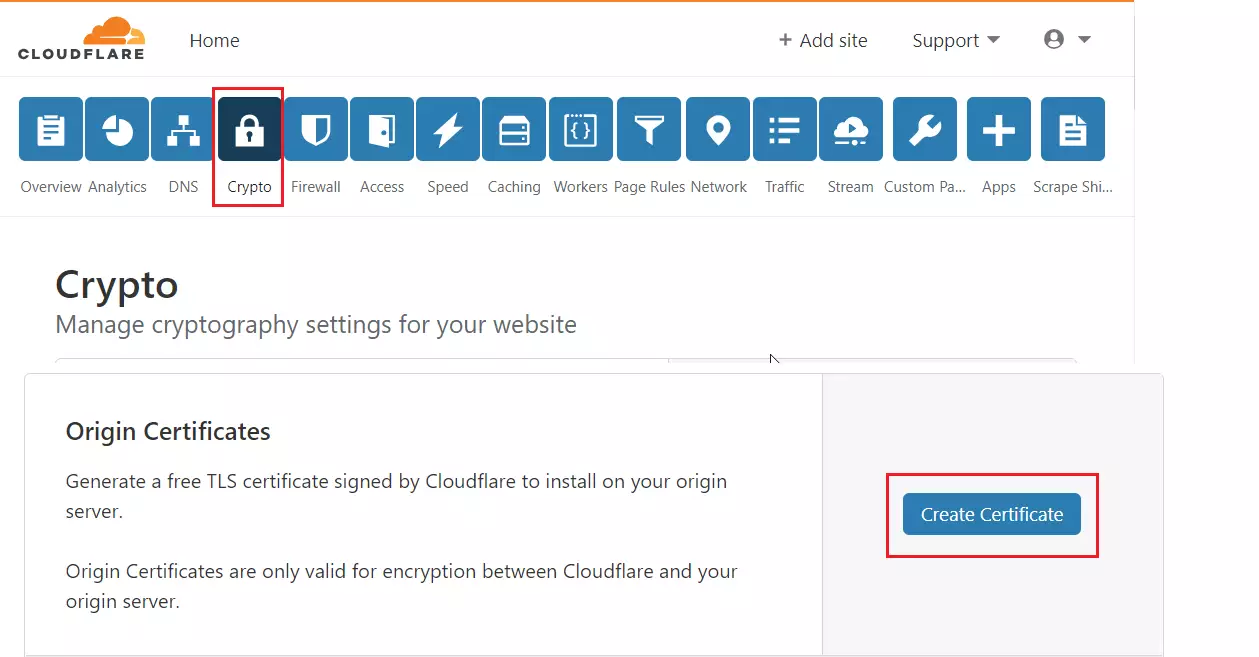
Next, let Cloudflare generate a private key and a CSR for the domain. Click Next.
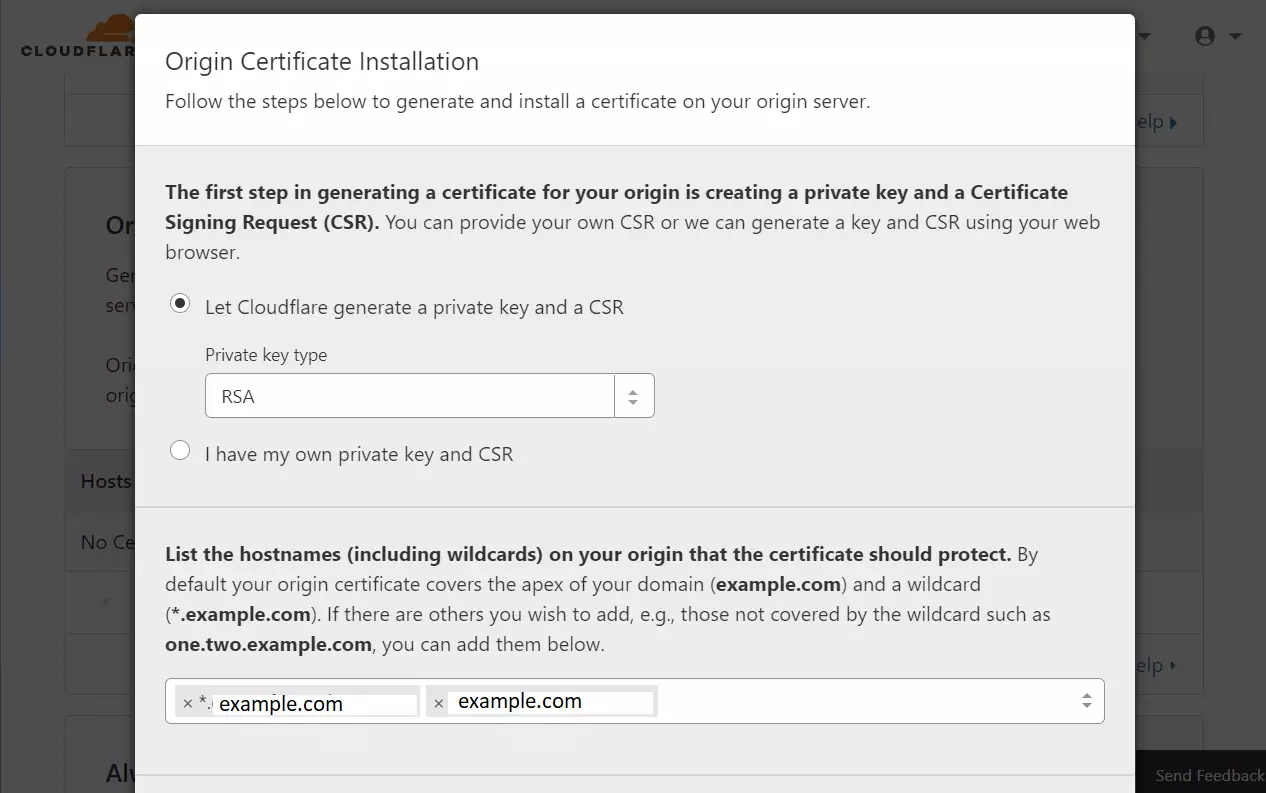
Then, copy and paste these into a text file onto your server.
Run the commands below on Ubuntu to create the Private key, Certificate, and Origin pull files (3 files). Then, copy and paste each content into the respective file. And save.
For the Private key file. Run this, copy and paste the private key given to you into the file, and save.
sudo nano /etc/ssl/private/cloudflare_key_example.com.pem
For the certificate file, run this copy, paste the certificate content into the file, and save.
sudo nano /etc/ssl/certs/cloudflare_example.com.pem
You’ll also want to download the Cloudflare Origin Pull certificate. You can download that from the link below:
Set up authenticated Origin pulls · Cloudflare SSL docs
Zone-Level — Cloudflare certificate
Under Zone-level certificate, expand the certificate button and copy its content.
Next, run the commands below to create an origin-pull-ca.pem file, paste the certificate content into the file below, and save.
sudo nano /etc/ssl/certs/origin-pull-ca.pem
Once done, you should have three files. The cloudflare_key_example.com.pem, cloudflare_example.com.pem and origin-pull-ca.pem.
We will use these files in the Nginx config below.
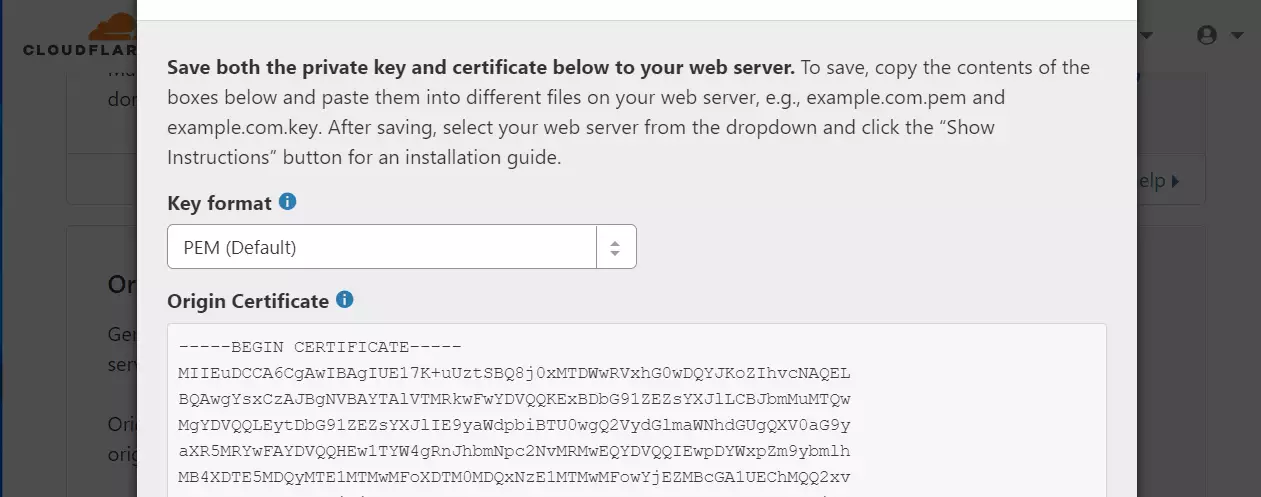
Pull the certificate files after saving the key, Certificate, and Origin. Continue below.
Still, on the Crypto page in your Cloudflare account, enable Always Use HTTPS, and you may also change settings for HSTS, but it is not necessary.
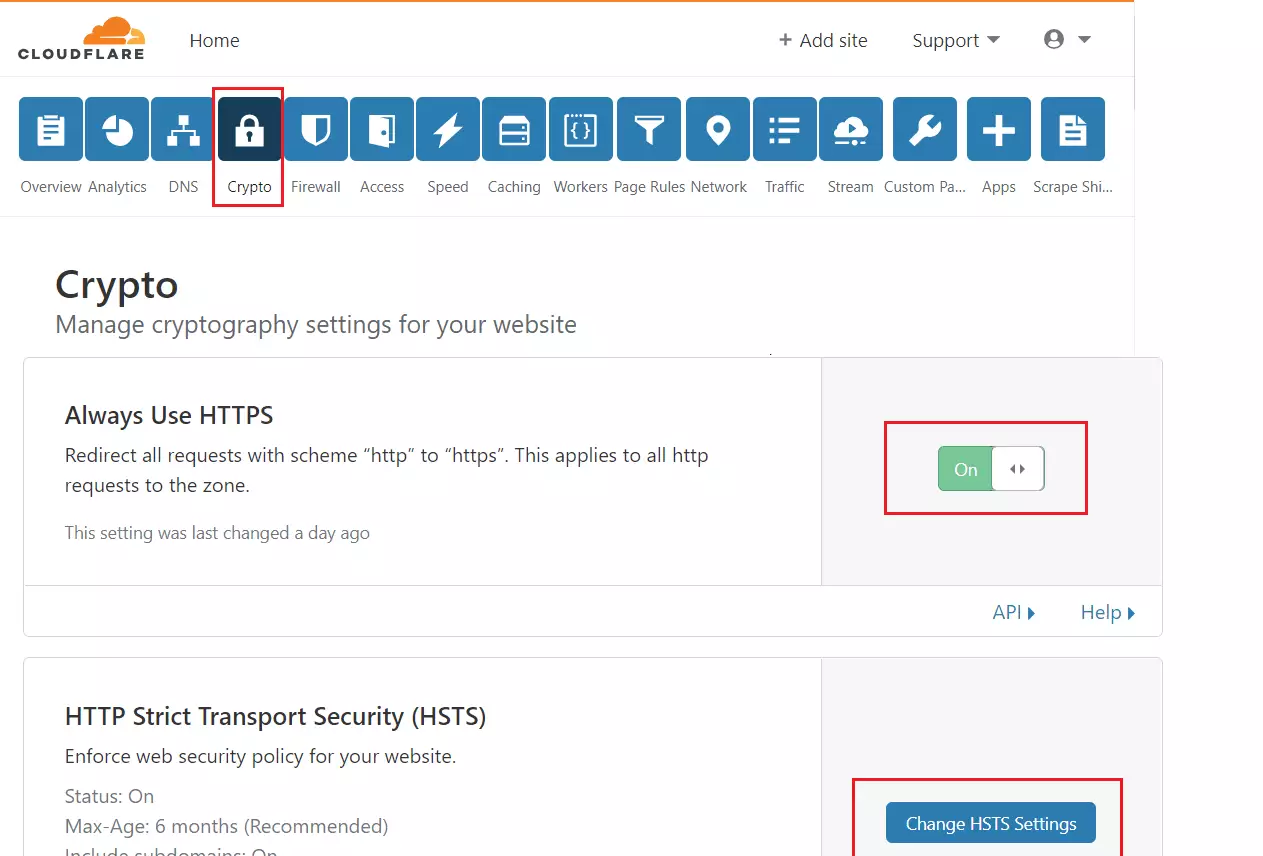
Next, turn on Authenticated Origin Pulls and Opportunistic Encryption, and continue.
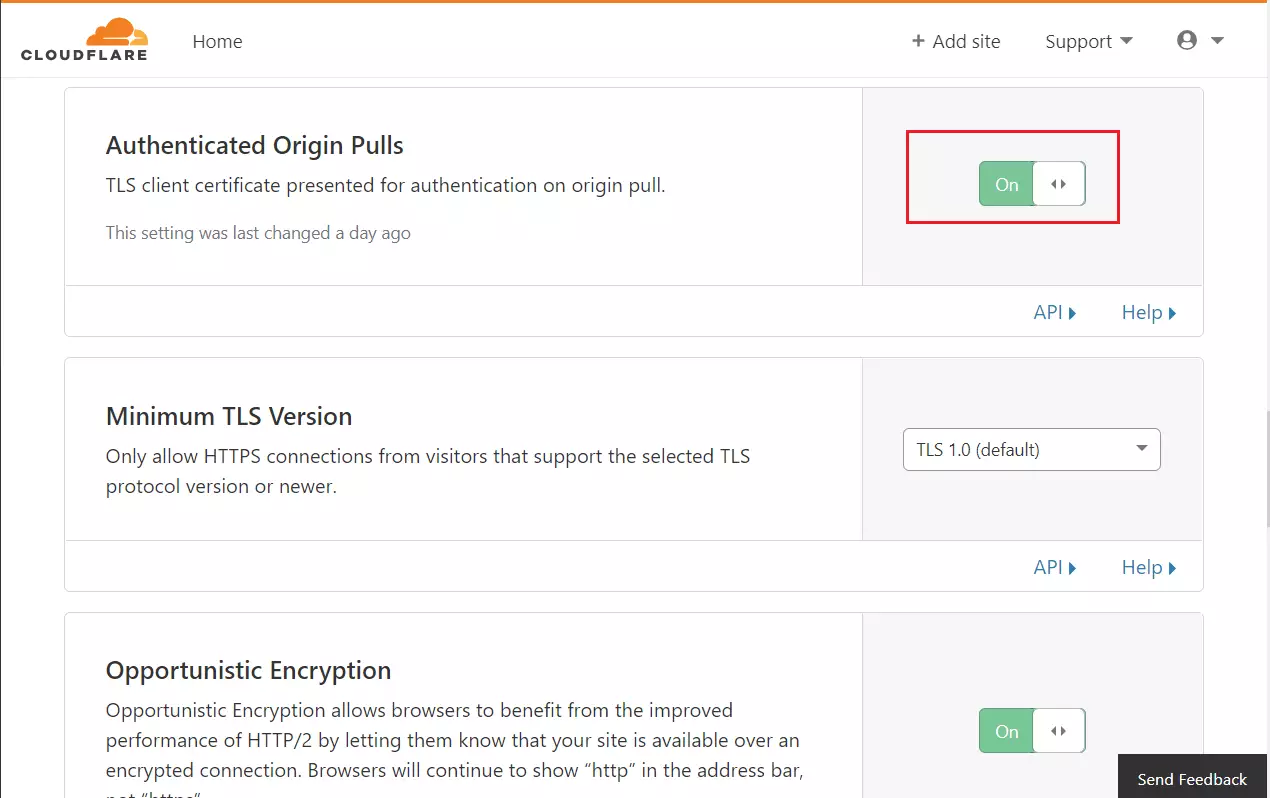
Then, turn on Automatic HTTPS Rewrites and continue.

Next, move to the Page Rules tab. Then, create a new rule for the site. Then, type the URL and choose Always Use HTTPS.
HTTP://* example.com/*
Always Use HTTPS
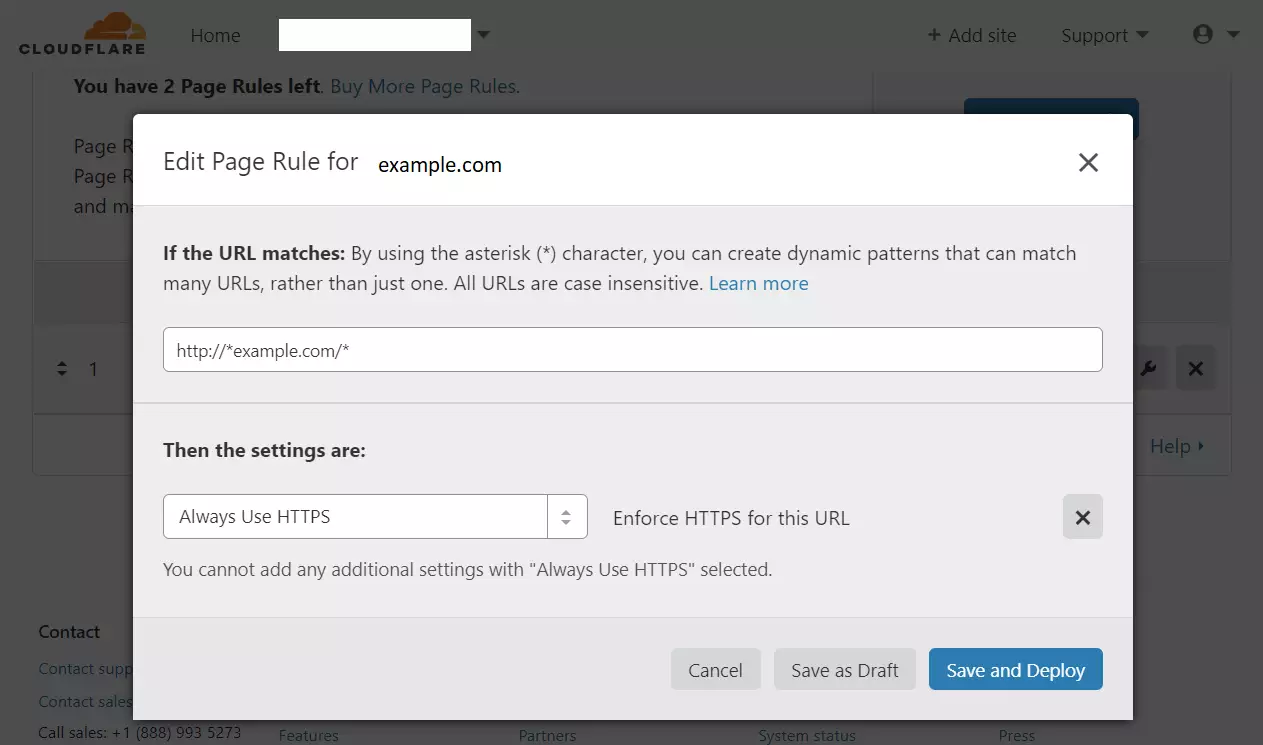
Save your settings, and you’re done with setting up Cloudflare.
How to Install and Configure Joomla
Now that Cloudflare is configured log on to your server and configure Joomla. First, install the Apache2 HTTP server since we use Apache2 for this post. To install the Apache2 server, run the commands below:
sudo apt update sudo apt install apache2
After installing Apache2, the commands below can stop, start, and enable the Apache2 service to always start up with the server boots.
sudo systemctl stop apache2.service sudo systemctl start apache2.service sudo systemctl enable apache2.service
Now that Apache2 has been installed browse your browser to the URL below to test whether the web server works.
https://localhost

If you see the page above, then Apache2 is successfully installed.
How to Install MariaDB Database Server
Joomla also requires a database server to store its content. MariaDB is a great place to start if you want a genuinely open-source database server. To install MariaDB, run the commands below:
sudo apt-get install mariadb-server mariadb-client
After installing MariaDB, the commands below can stop and start the service and enable it to start when the server boots.
Run these on Ubuntu 16.04 LTS
sudo systemctl stop mysql.service sudo systemctl start mysql.service sudo systemctl enable mysql.service
Run these on Ubuntu 19.04 and 18.04 LTS
sudo systemctl stop mariadb.service sudo systemctl start mariadb.service sudo systemctl enable mariadb.service
Next, run the commands below to secure the database server with a root password if you were not prompted to do so during the installation.
sudo mysql_secure_installation
When prompted, answer the questions below by following the guide.
- Enter current password for root (enter for none): Just press the Enter
- Set root password? [Y/n]: Y
- New password: Enter password
- Re-enter new password: Repeat password
- Remove anonymous users? [Y/n]: Y
- Disallow root login remotely? [Y/n]: Y
- Remove test database and access to it? [Y/n]: Y
- Reload privilege tables now? [Y/n]: Y
Once MariaDB is installed, run the commands below to test whether the database server was installed.
sudo mysql -u root -p
Type the root password when prompted.

The server was successfully installed if you see a similar screen.
How to Install PHP 7.2 and Related Modules
Joomla CMS is a PHP-based CMS, and PHP is required. However, PHP 7.2 may not be available in Ubuntu’s default repositories. To run PHP 7.2 on Ubuntu 16.04 and previous, you may need to run the commands below:
sudo apt-get install software-properties-common sudo add-apt-repository ppa:ondrej/php
Then update and upgrade to PHP 7.2
sudo apt update
Next, run the commands below to install PHP 7.2 and related modules.
sudo apt install php7.2 php7.2-common php7.2-gmp php7.2-curl php7.2-intl php7.2-mbstring php7.2-xmlrpc php7.2-mysql php7.2-gd php7.2-xml php7.2-cli php7.2-zip
After installing PHP 7.2, run the commands below to open the PHP default configuration file for Apache2.
sudo nano /etc/php/7.2/apache2/php.ini
The lines below are a good setting for most PHP-based CMS. Update the configuration file with these and save.
file_uploads = On allow_url_fopen = On short_open_tag = On memory_limit = 256M upload_max_filesize = 100M max_execution_time = 360 date.timezone = America/Chicago
Every time you change the PHP configuration file, you should restart the Apache2 web server. To do so, run the commands below:
sudo systemctl restart apache2.service
Once PHP is installed, create a test file called phpinfo.php in the Apache2 default root directory to test whether it’s functioning. ( /var/www/html/)
sudo nano /var/www/html/phpinfo.php
Then, type the content below and save the file.
<?php phpinfo( ); ?>
Next, open your browser and browse to the server’s hostname or IP address followed by phpinfo.php
http://localhost/phpinfo.php
You should see the PHP default test page.
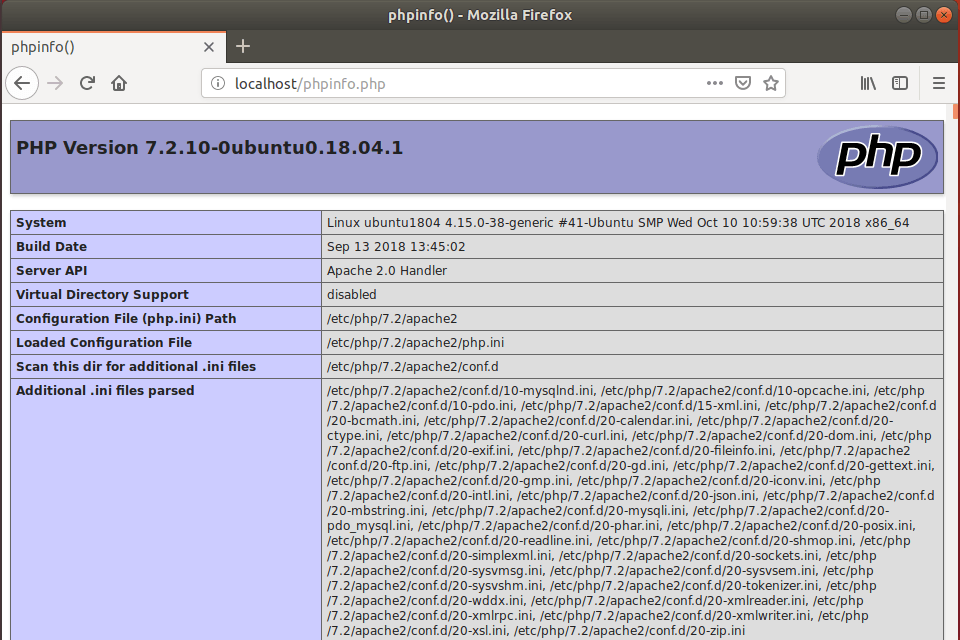
How to Create a Joomla Database
Once you’ve installed all the packages required for Joomla to function, continue below to start configuring the servers. First, run the commands below to create a blank Joomla database.
To log on to the MariaDB database server, run the commands below.
sudo mysql -u root -p
Then, create a database called joomla
CREATE DATABASE joomla;
Create a database user called joomlauser with a new password
CREATE USER 'joomlauser'@'localhost' IDENTIFIED BY 'new_password_here';
Then, grant the user full access to the database.
GRANT ALL ON joomla.* TO 'joomlauser'@'localhost' IDENTIFIED BY 'user_password_here' WITH GRANT OPTION;
Finally, save your changes and exit.
FLUSH PRIVILEGES; EXIT;
How to Download Joomla’s Latest Release
To get Joomla’s latest release, go to its official download page and get it from there. The link below is where to find Joomla’s latest archive versions.
https://downloads.joomla.org/
At the time of this writing, the latest version is 3.9.5. A future version will have different links to download from.
Run the commands below to download and extract Joomla version 3.9.5
cd /tmp wget https://downloads.joomla.org/cms/joomla3/3-9-5/joomla_3-9-5-stable-full_package-zip sudo unzip -d /var/www/html/example.com /tmp/joomla_3-9-5-stable-full_package-zip
Then, run the commands below to set the correct permissions for the Joomla root directory and give Apache2 control.
sudo chown -R www-data:www-data /var/www/html/example.com/ sudo chmod -R 755 /var/www/html/example.com/
How to Configure Apache for Joomla
Finally, configure the Apache2 site configuration file for Joomla. This file will control how users access Joomla content. Run the commands below to create a new configuration file called example.com.conf
sudo nano /etc/apache2/sites-available/example.com.conf
Then copy and paste the content below into the file and save it. Replace the highlighted line with your domain name and directory root location.
Also, reference the certificate files created above during Cloudflare setup.
<VirtualHost *:80> ServerName example.com ServerAlias www.example.com </VirtualHost> <VirtualHost *:443> Protocols h2 http:/1.1 ServerAdmin admin@example.com DocumentRoot /var/www/html/example.com ServerName example.com ServerAlias www.example.com SSLEngine on SSLCertificateFile /etc/ssl/certs/cloudflare_example.com.pem SSLCertificateKeyFile /etc/ssl/private/cloudflare_key_example.com.pem SSLCACertificateFile /etc/ssl/certs/origin-pull-ca.pem SSLVerifyClient require SSLVerifyDepth 1 <Directory /var/www/html/example.com/> Options FollowSymlinks AllowOverride All Require all granted </Directory> ErrorLog ${APACHE_LOG_DIR}/error.log CustomLog ${APACHE_LOG_DIR}/access.log combined </VirtualHost>
Save the file and exit.
How to Enable the Joomla
After configuring the VirtualHost above, please enable it by running the commands below.
sudo a2ensite example.com.conf sudo a2enmod rewrite sudo systemctl restart apache2.service
Then open your browser and browse to the server domain name. Next, you should see the Joomla setup wizard to complete. Please follow the wizard carefully.
http://example.com/
Then, follow the on-screen instructions. Select the installation language, main site configuration, and the backend admin account, then click Next to continue.
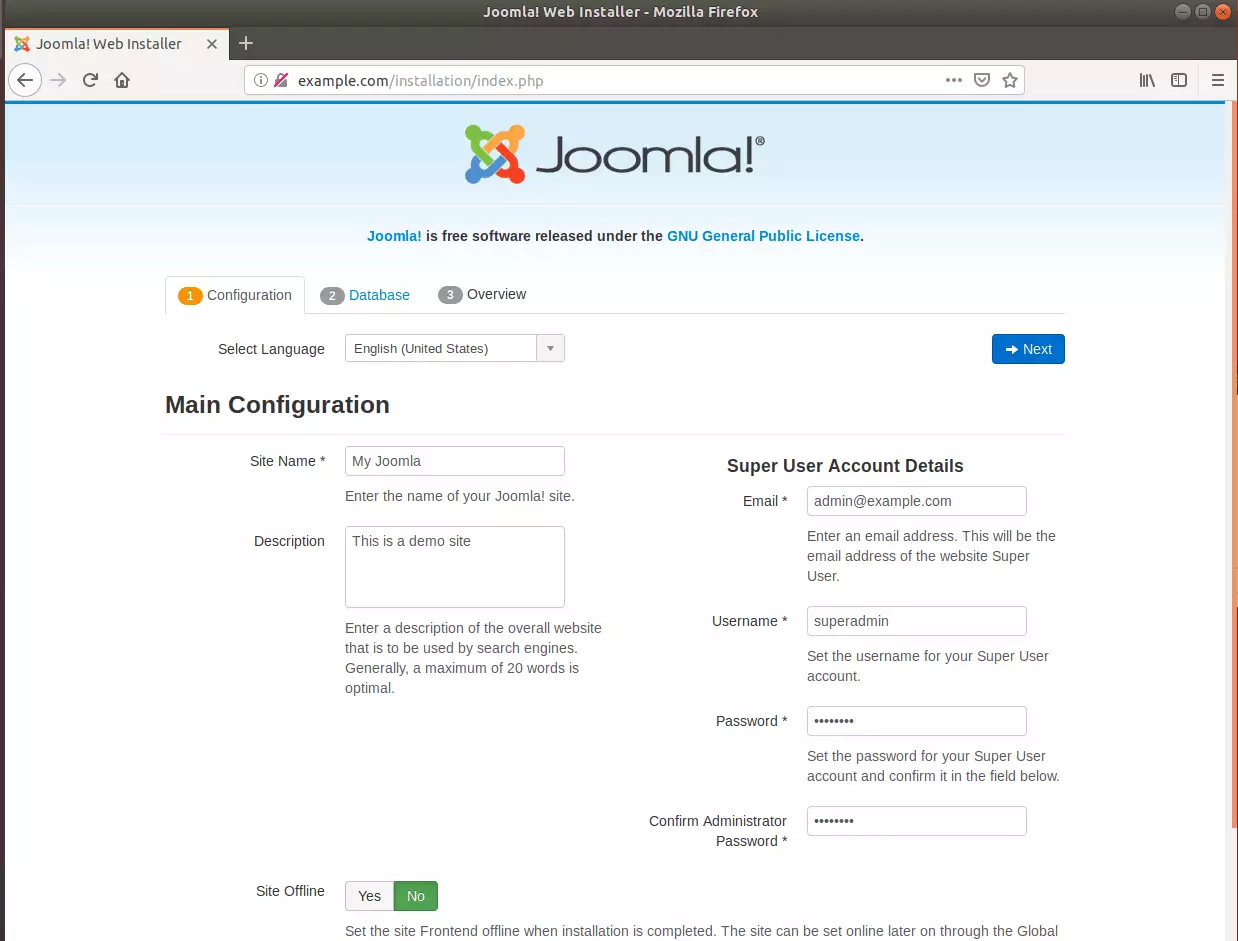
Next, type in the database info you created above and click Next to continue.
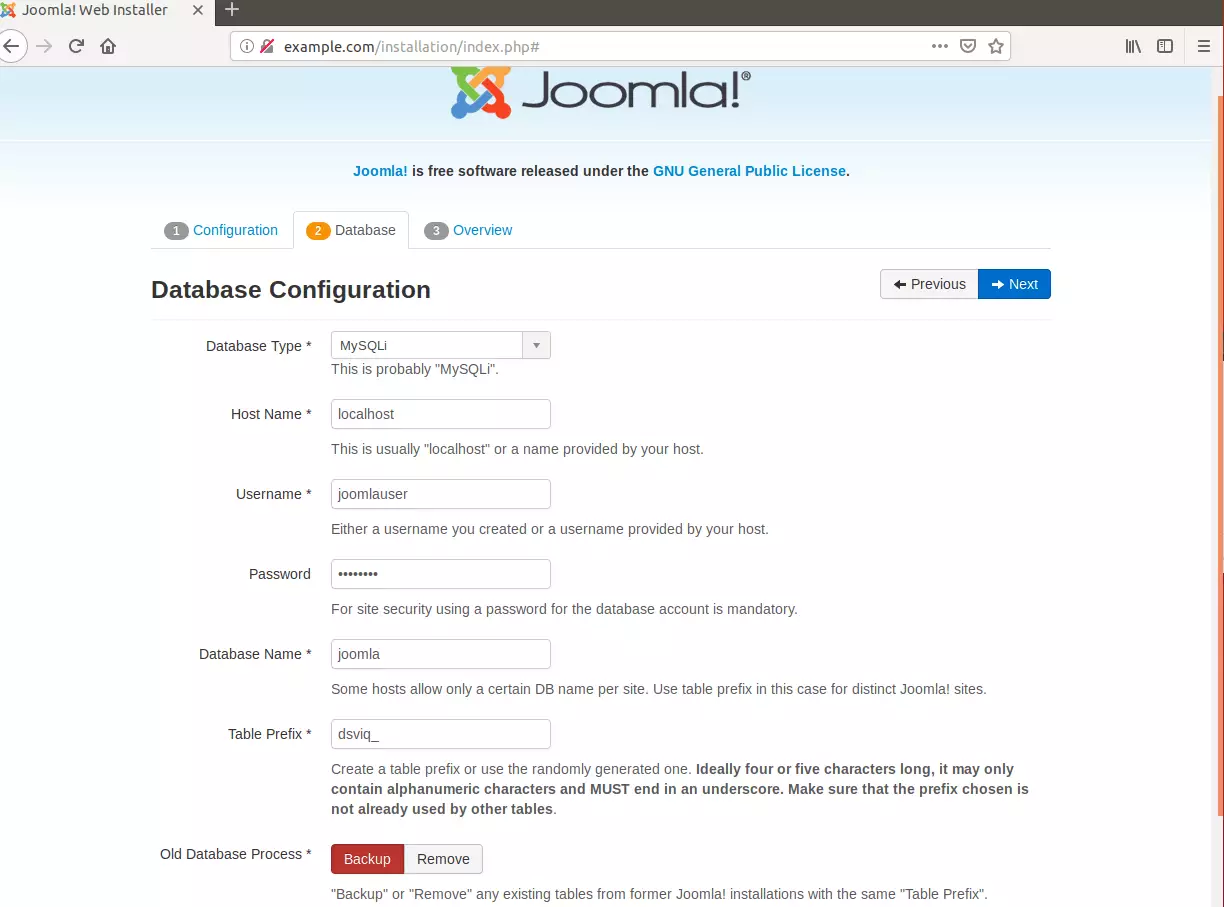
Confirm that the site info is correct and that the recommended settings are all marked green. Then click Install to begin the installation.

After a brief moment, your site should be installed and ready to use. Click the Remove Installation folder to secure your site.

Next, log on to the backend dashboard with the super admin account you created above.
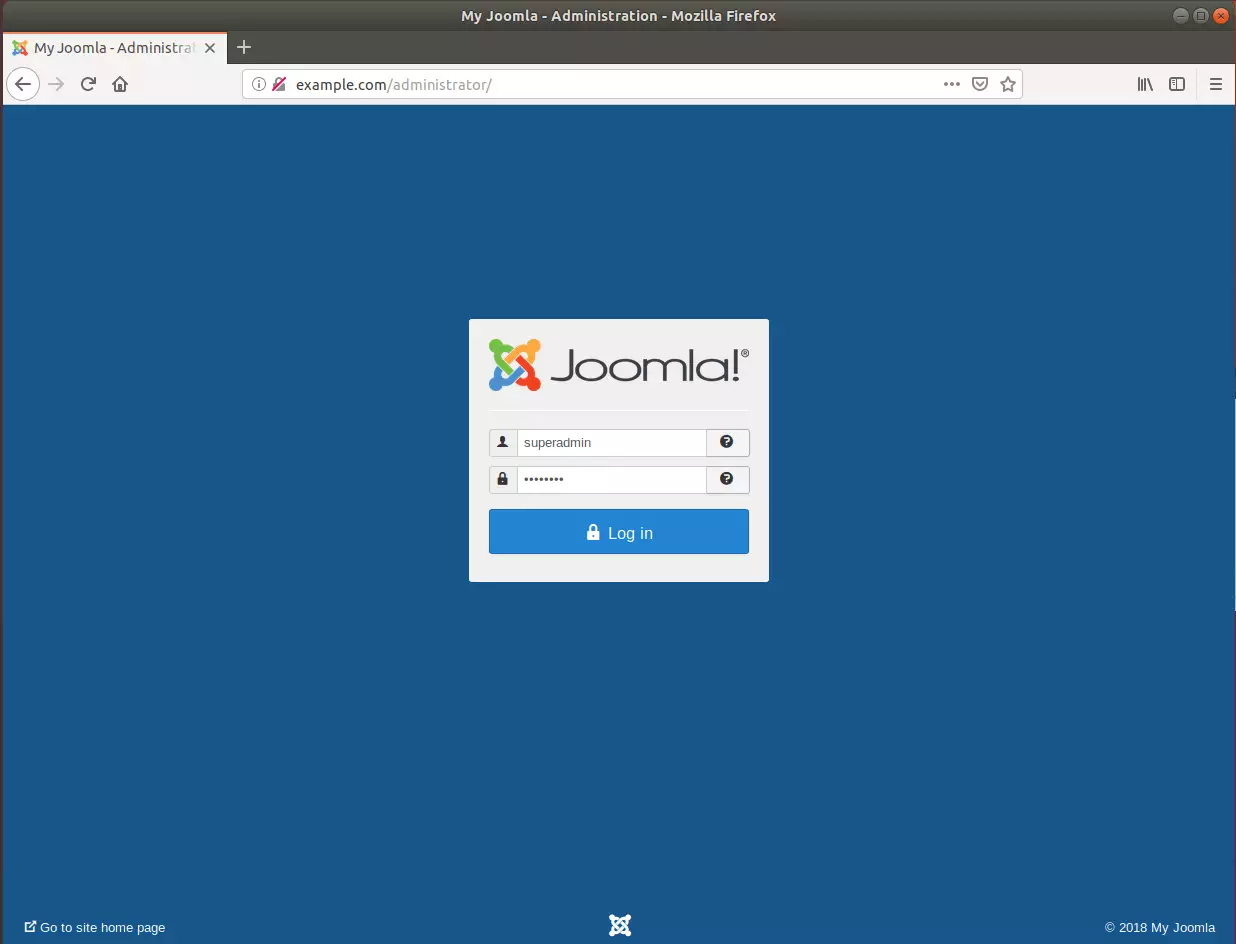
Enjoy!

Don’t forget to delete the installer directory if you didn’t do it above.
sudo rm -rf /var/www/html/joomla/installation
You may also like the post below:
Congratulations! You have successfully installed Joomla CMS with Cloudflare support on Ubuntu 16.04 | 18.04
You may also like the post below:

Leave a Reply Cancel reply